Introduction to Web Design for Startups
For
startups
to
succeed
in
today’s
digital
age,
having
a
strong
online
presence
is
essential.
This
section
will
explore
the
significance
of
web
design
in
the
startup
world,
emphasizing
its
role
in
building
credibility
and
establishing
a
connection
with
the
target
audience.
We’ll
also
delve
into
the
key
elements
contributing
to
an
effective
web
design
for
startups.
A
strong
online
presence
is
essential
for
startups
as
it
determines
their
visibility
and
credibility
in
the
digital
landscape.
With
a
well-designed
website,
startups
may
be
able
to
attract
and
retain
customers,
investors,
and
partners.
Web
design
is
crucial
in
building
credibility
and
connecting
with
the
target
audience.
Firstly,
a
professionally
designed
website
can
create
a
positive
first
impression.
It
reflects
the
startup’s
attention
to
detail,
professionalism,
and
commitment
to
quality.
A
visually
appealing
and
user-friendly
website
can
instill
trust
and
confidence
in
the
audience,
making
them
more
likely
to
engage
and
convert.
Secondly,
a
well-designed
website
helps
in
effectively
conveying
the
startup’s
brand
identity
and
message.
Startups
can
create
a
cohesive
and
memorable
brand
image
using
consistent
branding
elements
such
as
colors,
fonts,
and
imagery.
This
helps
in
differentiating
themselves
from
competitors
and
building
brand
recognition.
Moreover,
a
startup’s
website
serves
as
a
platform
for
telling
its
story
and
connecting
with
the
target
audience.
Through
compelling
content
and
an
intuitive
user
interface,
startups
can
effectively
communicate
their
value
proposition
and
engage
visitors.
This
connection
leads
to
increased
brand
loyalty
and
customer
retention.
Now,
let’s
delve
into
the
key
elements
that
contribute
to
an
effective
web
design
for
startups:
1.
Clear
and
intuitive
navigation:
It
is
easier
for
users
to
find
information
on
a
well-structured
and
easy-to-navigate
website.
Clear
navigation
menus
and
prominent
calls-to-action
guide
visitors
through
the
website,
improving
the
overall
user
experience.
2.
Responsive
design:
With
the
rising
usage
of
smartphones
and
tablets,
startup
websites
must
be
mobile-friendly
and
responsive.
In
a
responsive
design,
the
website
adapts
to
different
screen
sizes,
ensuring
that
users
experience
a
seamless
experience
regardless
of
their
device.
3.
High-quality
visuals:
Engaging
visuals
such
as
images,
videos,
and
infographics
can
capture
visitors’
attention
and
effectively
convey
the
startup’s
message.
High-resolution
images
and
relevant
multimedia
enhance
the
overall
aesthetics
and
user
experience.
4.
Relevant
and
captivating
content:
Compelling
and
informative
content
helps
startups
establish
authority
in
their
industry.
By
providing
valuable
and
relevant
information,
startups
can
engage
visitors
and
position
themselves
as
trusted
resources.
5.
Social
proof
and
testimonials:
Displaying
customer
reviews,
testimonials,
and
case
studies
can
build
trust
and
credibility.
Social
proof
demonstrates
that
the
startup
has
satisfied
customers
and
can
deliver
on
its
promises.
6.
Seamless
integration
with
social
media:
Integrating
social
media
platforms
and
sharing
buttons
allows
visitors
to
connect
with
the
startup
on
different
channels
easily.
This
enables
startups
to
reach
a
wider
audience
and
engage
with
users
beyond
their
websites.
II. Setting the Foundation for Web Design
1.
Brand
Identity:
Your
brand
identity
encompasses
everything
from
your
company’s
name,
logo,
color
palette,
language,
and
more.
It
involves
understanding
your
brand’s
core
values
and
unique
selling
proposition
and
communicating
them
through
your
website.
Consistent
and
compelling
branding
can
differentiate
your
brand
from
competitors
and
build
customer
loyalty.
2.
Understand
Your
Target
Audience:
Every
design
decision
should
revolve
around
your
target
audience.
Identify
who
they
are,
what
they
want,
how
they
behave
online
and
their
preferences.
Understand
their
pain
points
and
motivations,
which
will
guide
you
in
creating
a
website
that
answers
their
needs
and
appeals
to
them.
3.
Check
Out
the
Competition:
Look
at
what
your
competitors
are
doing
online.
This
doesn’t
mean
copying
them,
but
understanding
what
works
and
what
doesn’t
in
your
industry.
By
analyzing
their
websites,
you
can
gain
insights
into
the
latest
trends,
effective
design
elements,
and
strategies
for
better
user
engagement.
4.
Gather
Inspiration:
Once
you
get
an
idea
about
the
competition,
look
for
inspiration
elsewhere
too.
Plenty
of
resources
online
exhibit
creative
and
effective
web
designs
from
various
industries.
Websites
like
Awwwards,
Behance,
and
Pinterest
can
provide
plenty
of
creative
ideas
to
get
your
mind
started.
5.
Sketch
out
a
Rough
Design:
Sketch
the
basic
design
structure
of
your
website.
This
will
include
the
main
pages,
layout,
navigation,
and
the
elements
on
each
page.
Also,
outline
the
user
journey
flow-
how
users
will
navigate
through
your
website.
6.
Define
Your
Website’s
Goals:
Define
what
you
want
your
website
to
achieve.
It
can
involve
lead
generation,
sales,
brand
awareness,
or
providing
information.
These
goals
will
guide
you
in
designing
a
focused
and
effective
website.
Remember,
creating
a
successful
website
design
isn’t
just
about
making
it
pretty.
It’s
about
crafting
a
website
that
communicates
your
brand
message,
serves
the
needs
of
your
target
audience,
stands
out
from
the
competition,
and,
ultimately,
achieves
your
business
goals.
III. Planning the Website Architecture
Website Goals and User Journey
A
website’s
primary
purpose
should
always
resonate
with
the
business’s
objectives.
For
instance,
some
sites
are
built
to
generate
leads,
while
others
are
crafted
to
sell
products
or
provide
essential
information.
Clear
business
goals
are
necessary
to
guide
the
website
design
and
content
strategy.
The
user
journey
refers
to
a
visitor’s
experience
when
interacting
with
a
site.
It
covers
the
steps
a
visitor
will
go
through
to
achieve
a
specific
goal,
such
as
purchasing
or
finding
certain
information.
The
user
journey
should
be
as
intuitive
as
possible,
guiding
the
visitor
from
the
landing
page
towards
the
intended
action
goal
smoothly
and
efficiently.
Simple,
clear
instructions,
consistent
branding,
and
a
logical
progression
boosts
the
effectiveness
of
a
website
and
can
significantly
enhance
user
satisfaction.
Site Map and Navigation
Creating
user-friendly
site
maps
and
navigational
systems
also
plays
a
pivotal
role
in
ensuring
a
positive
user
experience.
A
site
map
provides
a
logical,
organized
list
of
all
pages
on
the
website.
A
site
map
should
be
concise
and
easy
to
understand,
like
a
table
of
contents.
Navigation,
on
the
other
hand,
refers
to
the
tools
visitors
use
to
move
around
your
website.
These
tools
include
menus,
links,
and
a
search
bar
for
larger
sites.
User-friendly
navigation
makes
it
easier
for
visitors
to
find
what
they
need,
reducing
frustration
and
increasing
the
likelihood
of
achieving
their
(and
your)
goal.
The
keys
to
successful
website
organization
are
planning
and
execution.
A
well-thought-out
plan
paired
with
excellent
execution
can
yield
a
website
that
is
intuitive,
user-friendly,
and
focused
on
achieving
its
goals.
From
business
objectives
and
user
journey
mapping
to
site
map
creation
and
navigational
design,
each
stage
should
be
carefully
considered
and
designed
with
the
end
user
in
mind.
In
conclusion,
having
clear
website
goals,
a
comprehensible
user
journey,
a
user-friendly
site
map,
and
a
straightforward
navigation
system
are
essential
for
a
positive
user
experience.
By
focusing
on
these
areas,
business
owners
can
ensure
their
website
serves
its
visitors
effectively
and
efficiently,
promoting
better
visitor
satisfaction
and
boosting
business
success.
IV. Designing the User Interface (UI)
Visitors
will
likely
engage
with
a
website
if
it
is
visually
appealing.
This
section
will
provide
insights
on
selecting
the
right
color
scheme
and
typography
and
incorporating
visual
elements
and
graphics.
Additionally,
it
will
stress
the
significance
of
mobile
responsiveness
for
an
adaptable
user
experience.
1.
Choosing
the
Right
Color
Scheme:
Your
website’s
color
scheme
is
important
in
establishing
your
brand’s
identity.
colors
can
evoke
various
emotions
and
reactions
from
your
visitors.
Thus,
selecting
the
appropriate
colors
to
cater
to
your
target
market
is
essential.
More
often
than
not,
a
simple
and
coherent
color
palette
is
more
effective.
Stick
with
two
to
three
main
colors
to
create
a
harmonious
visual
appeal.
2.
Typography: The
typography
you
choose
can
significantly
influence
your
website’s
overall
aesthetic.
When
selecting
fonts,
there
are
two
things
you
should
consider
–
readability
and
character.
Choose
a
font
that
is
easy
to
read
but
still
carries
your
brand’s
personality.
Also,
consider
the
compatibility
of
your
chosen
font
across
different
browsers
and
systems.
3.
Visual
Elements
and
Graphics:
Adding
high-quality
images,
illustrations,
videos,
infographics,
and
other
graphics
to
your
website
will
make
it
more
appealing
and
engaging.
Visual
elements
can
increase
visitors’
time
on
your
site,
boosting
your
SEO.
Be
mindful
of
the
file
sizes
of
these
elements,
as
excessively
large
files
can
slow
down
your
site,
potentially
driving
visitors
away.
4.
Mobile
Responsiveness:
With
the
rampant
use
of
mobile
devices,
ensuring
your
website
is
mobile-responsive
is
more
important
than
ever.
This
means
that
your
website
should
be
able
to
adapt
its
layout
to
fit
the
screen
of
any
device
it
is
viewed
on.
A
website
that
is
not
mobile-friendly
can
frustrate
visitors
and
result
in
them
leaving
your
site,
possibly
seeking
your
competitors
instead.
5.
Consistency: Consistency
is
the
key
to
a
visually
appealing
and
efficient
website.
Your
colors,
fonts,
and
graphics
should
all
follow
a
uniform
theme.
This
strengthens
your
brand
identity
and
makes
your
website
look
more
professional.
A
consistent
design
also
aids
in
ease
of
navigation
for
your
website
visitors,
heightening
their
overall
user
experience.
Remember,
your
website
acts
as
your
online
storefront.
It
is
often
the
first
touchpoint
for
potential
customers,
so
make
it
count.
V. Developing Engaging Content
1.
Persuasive
Copy
and
Headlines:
One
of
the
key
tactics
to
persuade
your
audience
is
to
understand
their
needs
and
interests.
Incorporate
catchy
headlines
and
compelling
content
while
also
considering
SEO.
Focus
on
solving
problems,
delivering
solutions
and
triggering
emotions.
2.
Use
of
Images:
Images
can
be
a
great
way
to
engage
with
your
audience.
It
can
tell
a
story,
evoke
emotions,
and
easily
explain
complex
issues.
It’s
also
a
brilliant
way
to
enhance
your
website’s
aesthetics.
The
images
should
be
high-quality,
relevant
and
optimized
for
web
use.
3.
Videos:
Videos
can
deliver
information
quicker
and
more
efficiently
than
text
alone.
Creating
informative,
captivating,
and
engaging
videos
can
be
an
excellent
strategy
to
keep
users
on
your
site
longer.
It
adds
a
personal
touch,
thus
helping
you
to
connect
better
with
your
audience.
4.
Interactive
Elements:
Another
way
to
boost
engagement
is
by
including
interactive
elements
like
quizzes,
polls,
etc.
Interactive
infographics,
for
instance,
can
provide
information
in
a
fun
and
engaging
way.
5.
Blogs:
Maintaining
a
blog
section
is
a
wonderful
way
to
update
your
website
with
relevant
and
informative
content
consistently.
Blogs
enable
your
website
to
rank
higher
in
search
results
and
drive
more
traffic.
6.
Social
Media:
Use
social
media
to
reach
a
wider
audience.
Try
to
have
a
good
presence
on
various
social
platforms.
Share
your
content
on
these
platforms
to
drive
traffic
and
increase
engagement.
Social
sharing
buttons
should
be
added
to
facilitate
the
sharing
of
your
content.
Remember,
engaging
content
understands
the
interests
of
its
readers;
therefore,
it’s
essential
to
do
proper
research
and
planning.
Use
analytics,
surveys,
and
user
testing
techniques
to
understand
your
audience
better
and
create
engaging
content.
Maintaining
a
consistent
tone,
writing
concise
content,
and
providing
valuable
information
can
help
you
build
trust
with
your
audience.
Also,
remember
to
update
your
website
to
keep
it
fresh
and
relevant
regularly.
VI. Optimizing for User Experience (UX)
A
seamless
user
experience
is
paramount
for
keeping
visitors
on
the
website.
This
section
will
focus
on
techniques
to
improve
loading
speed,
implement
intuitive
forms,
calls-to-action
(CTAs),
and
enhance
accessibility
and
usability.
1.
Improve
Loading
Speed:
Maintaining
a
fast
loading
speed
is
the
first
step
in
creating
a
seamless
user
experience.
A
slower
website
not
only
affects
user
experience
but
also
negatively
impacts
SEO.
You
can
optimize
the
loading
speed
by
compressing
images,
eliminating
unnecessary
plugins,
enabling
browser
caching,
and
reducing
server
response
time.
2.
Implementing
Intuitive
Forms:
Registration,
contact,
or
subscription
forms
are
a
crucial
part
of
websites
to
collect
information
or
understand
your
audience’s
preferences.
The
key
is
to
keep
these
forms
simple
and
user-friendly.
Reduce
the
number
of
fields,
use
easy-to-understand
labels,
provide
clear
error
messages,
and
use
field
validation
to
make
the
form-filling
process
quicker
and
more
intuitive.
3.
Powerful
CTAs:
CTAs
are
designed
to
guide
users
towards
your
goal
conversion.
A
CTA’s
placement,
size,
color,
and
phrasing
can
heavily
influence
conversion
rates.
The
best
practice
is
to
make
them
action-oriented
(i.e.,
“Download
Now,”
“Get
Started”),
create
a
sense
of
urgency,
and
make
them
stand
out
on
the
page.
4.
Enhancing
Accessibility:
The
website
should
be
designed
considering
the
users’
diversity.
It
must
cater
to
people
with
different
abilities
and
disabilities.
Use
consistent
and
predictable
navigation,
add
alternative
text
to
images,
use
a
strong
contrast
ratio
for
text,
and
avoid
complicated
gestures
or
interactions.
5.
Usability:
Ensure
the
information
on
your
website
is
easy
to
find
and
that
users
can
navigate
the
site
easily.
This
involves
organizing
content
logically,
using
clear
and
consistent
terminologies,
incorporating
search
functionality,
and
providing
helpful
error
messages.
6.
Responsive
Design:
Having
a
responsive
design
that
adapts
to
different
screen
sizes
and
orientations
is
essential
as
users
access
the
website
through
a
variety
of
devices.
7.
Testing:
Regular
testing
and
analysis
should
be
conducted
to
get
user
feedback
and
fix
any
usability
issues
that
might
occur.
Use
A/B
testing,
user
surveys,
and
analytics
to
improve
site
performance
and
user
experience
continuously.
Improving
a
website’s
user
experience
helps
retain
visitors
and
convert
them
into
loyal
customers.
A
mindful
and
user-centric
approach
to
website
design
is
always
beneficial.
VII. Leveraging SEO for Startup Growth
To
drive
organic
traffic,
startups
must
implement
effective
SEO
strategies.
This
section
will
cover
keyword
research,
on-page
SEO
best
practices,
and
off-page
SEO
tactics
to
increase
visibility.
Keyword
Research:
Keyword
research
is
the
foundation
of
any
SEO
strategy.
In
search
engine
optimization,
it’s
all
about
important
to
identify
the
keywords
and
phrases
users
use
to
search
for
similar
products
and
services
to
your
own.
Using
Google
Keyword
Planner
or
SEMRush
can
help
you
discover
these
keywords.
Step
one
is
understanding
your
niche
and
what
content
your
audience
is
interested
in.
The
next
step
is
to
find
keyword
opportunities;
these
are
keywords
that
have
a
high
search
volume
but
low
competition.
Using
long
tail
keywords
can
also
help
you
rank
higher
as
they
have
less
competition
but
are
more
relevant
to
your
audience.
On-Page
SEO: Optimizing
a
website’s
on-page
SEO
will
improve
its
ranking
and
make
it
more
relevant
to
the
user.
This
involves
optimizing
your
metadata
–
title
tags,
meta
descriptions
and
headers
–
for
your
target
keywords.
It
also
includes
creating
high-quality,
relevant
content.
The
aim
of
your
content
should
be
to
provide
value
to
your
audience,
answer
their
questions
and
solve
their
problems.
Your
content
should
be
easy
to
read
and
comprise
short
sentences
and
paragraphs.
Using
bullet
points
and
sub
header
can
also
improve
readability.
A
positive
user
experience
hinges
on
your
webpage
loading
quickly
and
being
easy
to
navigate.
A
mobile-friendly
design
is
also
vital,
as
most
online
traffic
now
comes
from
mobile
devices.
Off-Page
SEO: The
term
“off-page
SEO”
refers
to
activities
you
can
perform
to
enhance
your
website’s
visibility
outside
of
its
boundaries.
This
primarily
involves
link
building,
where
you
get
other
quality
websites
to
link
back
to
your
site.
You
can
gain
backlinks
through
guest
posting
on
other
relevant
websites,
promoting
your
content
on
social
media,
and
joining
online
communities
in
your
industry.
Building
relationships
with
influencers
and
bloggers
in
your
niche
can
also
lead
to
backlink
opportunities.
In
conclusion,
SEO
is
a
long-term
process,
but
startups
must
improve
their
visibility
and
attract
organic
traffic.
By
researching
relevant
keywords,
optimizing
your
web
pages
and
building
quality
backlinks,
you
can
steadily
increase
your
online
presence
and
search
engine
rankings.
VIII. Integrating E-commerce (if applicable)
For
startups
involved
in
e-commerce,
setting
up
a
well-designed
online
store
is
vital.
This
section
will
discuss
secure
payment
gateways,
checkout
processes,
product
pages,
and
customer
reviews.
1.
Secure
Payment
Gateways
–
Secure,
effortless
payments
are
the
lifeblood
of
any
online
store.
Choosing
a
reliable
payment
gateway
ensures
customers
feel
safe
while
transacting.
Payment
gateways
like
PayPal,
Stripe,
and
Braintree
have
proven
their
worth
in
the
industry.
They
provide
secure
encryption,
ensuring
that
sensitive
information,
such
as
credit
card
numbers,
is
securely
transmitted.
These
platforms
are
also
easy
to
integrate
into
your
online
store.
The
chosen
payment
gateway
should
be
able
to
accept
an
array
of
payment
methods,
including
credit
cards,
mobile
wallets,
cryptocurrency,
etc.
2.
Checkout
Processes
–
A
smooth
and
quick
checkout
process
is
crucial
in
reducing
cart
abandonment
rates.
Make
sure
your
checkout
process
is
simple,
quick,
and
mobile-friendly.
Avoid
long
forms,
complicated
steps,
and
unnecessary
information.
The
option
for
guest
checkout
can
also
be
beneficial.
Further,
showing
a
progress
indicator
during
checkout
can
help
customers
know
how
many
steps
are
left,
providing
them
with
a
sense
of
progression.
3.
Product
Pages
–
Product
pages
are
the
heart
of
your
online
store.
It’s
where
customers
decide
whether
to
purchase
or
not.
High-quality
images,
detailed
product
descriptions,
available
sizes,
colors,
and
prices
are
important
product
page
elements.
Virtual
try-on,
product
videos,
and
360-degree
views
are
also
becoming
increasingly
popular,
offering
a
comprehensive
view
of
the
product.
Make
sure
the
“Add
to
Cart”
button
is
prominent.
Include
related
products
or
up-sell
and
cross-sell
items
to
boost
sales
further.
4.
Customer
Reviews
–
Reviews
and
customer
ratings
significantly
influence
purchasing
decisions.
Your
customers
should
be
able
to
leave
reviews
about
their
purchased
products.
It
creates
a
sense
of
community
and
trust
among
potential
customers.
You
demonstrate
your
commitment
to
improving
your
products
and
services
by
responding
to
positive
and
negative
reviews.
Having
these
essential
components
in
your
online
store
increases
the
chance
of
converting
site
visitors
into
paying
customers,
increasing
revenue
and
customer
satisfaction.
Always
continually
test
and
optimize
each
area
to
ensure
a
seamless
shopping
experience
on
your
e-commerce
site.
IX. Measuring and Analyzing Website Performance
To
gauge
the
effectiveness
of
web
design
efforts,
startups
need
to
analyze
website
performance
data.
This
section
will
focus
on
web
analytics
and
tracking
tools,
interpreting
data,
and
conducting
A/B
testing
for
continuous
optimization.
Web
Analytics
and
Tracking
Tools
Web
analytics
measures,
collects,
analyses
and
reports
internet
data
to
understand
user
behavior
and
optimize
web
usage.
Web
analytics
tools
are
software
applications
used
to
monitor
web
traffic
and
provide
in-depth
analysis
of
user
behavior.
Some
popular
web
analytics
tools
include
Google
Analytics,
Adobe
Analytics,
and
Crazy
Egg.
A
free
web
analytics
tool,
Google
Analytics
provides
insight
into
how
users
find
and
use
websites.
It
tracks
and
reports
website
traffic
and
provides
data
on
user
behavior,
such
as
the
number
of
visitors,
page
views,
bounce
rate,
and
average
session
duration.
Adobe
Analytics,
a
paid
service,
goes
further
by
offering
segmentation,
real-time
analysis
rules,
custom
variables,
e-commerce
tracking,
and
the
ability
to
incorporate
data
from
social
networks
and
mobile
applications.
Crazy
Egg
is
another
tool
that
provides
heatmaps,
scroll
maps,
and
confetti
reports
to
show
where
users
click
and
how
far
they
scroll
down
a
webpage.
Interpreting
Data
Having
access
to
data
is
one
thing,
but
being
able
to
interpret
this
data
and
make
sense
of
it
is
where
the
real
value
lies.
Analysts
must
identify
key
performance
indicators
(KPIs)
for
their
websites
and
continually
monitor
these
to
gain
knowledge.
These
indicators
may
include
users,
new
users,
sessions
per
user,
pageviews,
pages
per
session,
session
duration,
and
bounce
rate.
By
analyzing
and
interpreting
the
data
from
these
KPIs,
businesses
can
gain
many
insights
into
user
behavior,
content
performance,
and
overall
website
performance.
They
can
assess
which
pages
generate
the
most
interest,
how
long
users
stay
on
the
site,
and
what
flow
they
take
through
the
site.
A/B
Testing
In
A/B
testing,
two
versions
of
a
webpage
or
other
user
experience
are
compared
to
see
which
performs
better.
They
can
test
anything
from
headline
text
to
call-to-action
button
colors
through
layouts
and
image
placements.
In
an
A/B
test,
users
are
randomly
split
between
two
versions
(A
and
B).
Based
on
the
defined
metrics,
their
resulting
behavior
is
then
tracked
and
analyzed
to
ascertain
which
version
was
more
successful.
A/B
testing
allows
for
continual
website
optimization
based
on
empirical
data
rather
than
guesswork.
It
considers
user
behavior
and
preference,
crucial
web
design
and
development
aspects.
In
conclusion,
startups
must
utilize
web
analytics
and
tracking
tools
to
collect
data,
properly
interpret
it
to
gain
insights
into
user
behavior
and
webpage
effectiveness,
and
continually
conduct
A/B
testing
to
optimize
their
websites
for
better
performance
and
user
experience.
X. Summary: Building a Successful Web Presence for Startups
This
section
will
summarize
the
key
elements
of
effective
web
design
for
start-ups,
highlighting
its
pivotal
role
in
their
success.
1.
User-friendly
design:
The
user
interface
should
be
intuitive
and
have
a
navigational
structure
that
allows
users
to
find
what
they
need
easily
and
quickly.
2.
Mobile
Responsiveness:
With
increasing
numbers
of
users
browsing
the
internet
on
mobile
devices,
web
designs
must
be
responsive
and
adapt
to
various
device
sizes
efficiently.
3.
Consistency:
The
design,
color
schemes,
fonts,
and
graphics
across
all
pages
should
consistently
portray
a
unified
and
professional
image
of
the
start-up.
4.
Loading
Speed:
A
slow-loading
website
will
drive
users
away.
Therefore,
optimizing
the
website’s
loading
speed
is
crucial
to
offer
a
seamless
user
experience.
5.
SEO-friendly:
The
website
should
be
designed
and
structured
in
a
way
that
it’s
search
engine
optimization-friendly,
which
improves
visibility
and
the
chances
of
being
found
online.
6.
Content
Quality:
High-quality,
engaging,
and
relevant
content
is
vital
to
keep
visitors
engaged
and
encourage
them
to
return.
7.
Visual
Elements:
Effective
use
of
images,
infographics,
videos,
and
animations
can
enhance
the
visual
appeal
of
the
website
and
significantly
improve
user
engagement.
8.
Easy
to
Update:
The
website’s
backend
should
be
designed
to
be
easy
to
update
for
non-technical
staff.
9.
Clear
Call-to-Action:
clear
call-to-action
Web
design
must
communicate
what
the
visitors
should
do,
such
as
sign
up
for
a
newsletter,
download
an
app,
or
purchase.
10.
Analytics:
Lastly,
having
an
analytics
setup
is
beneficial
in
tracking
user
behavior,
identifying
popular
content,
and
understanding
what
improvements
can
be
made.
An
effective
web
design
plays
a
crucial
role
in
portraying
a
start-up’s
image,
reaching
out
to
potential
customers,
and
establishing
an
online
presence,
ultimately
leading
to
the
start-up’s
success.



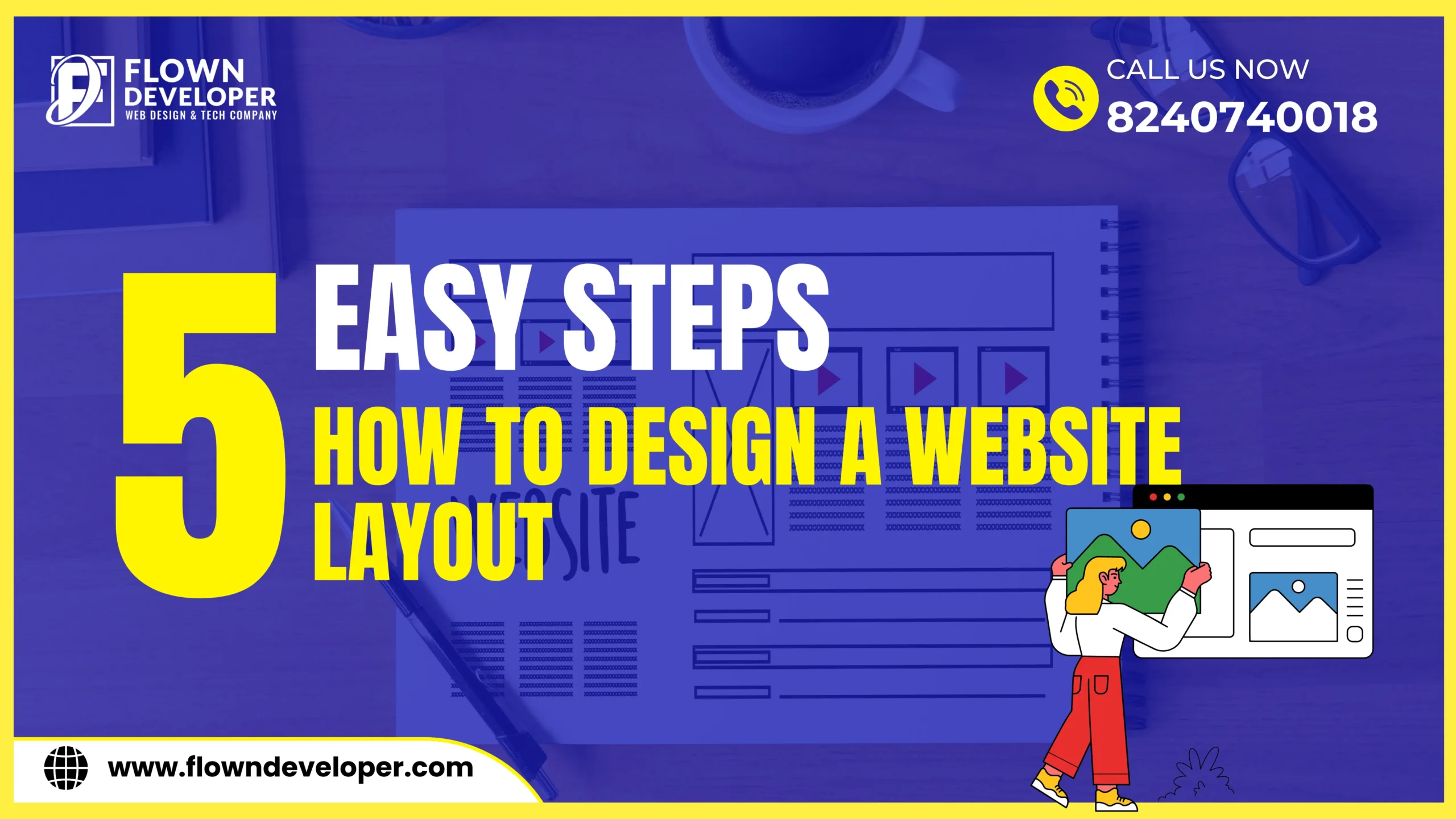
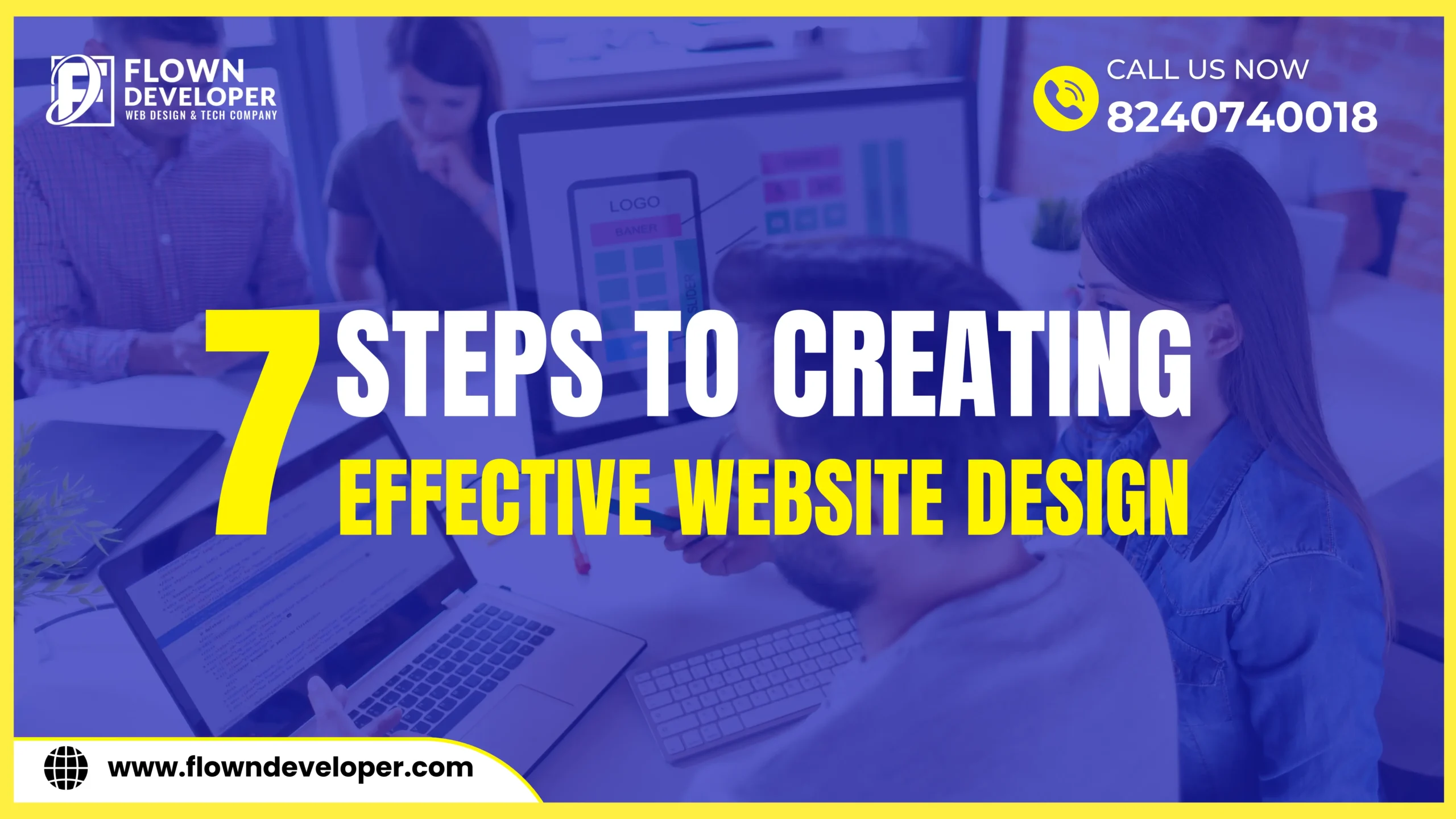
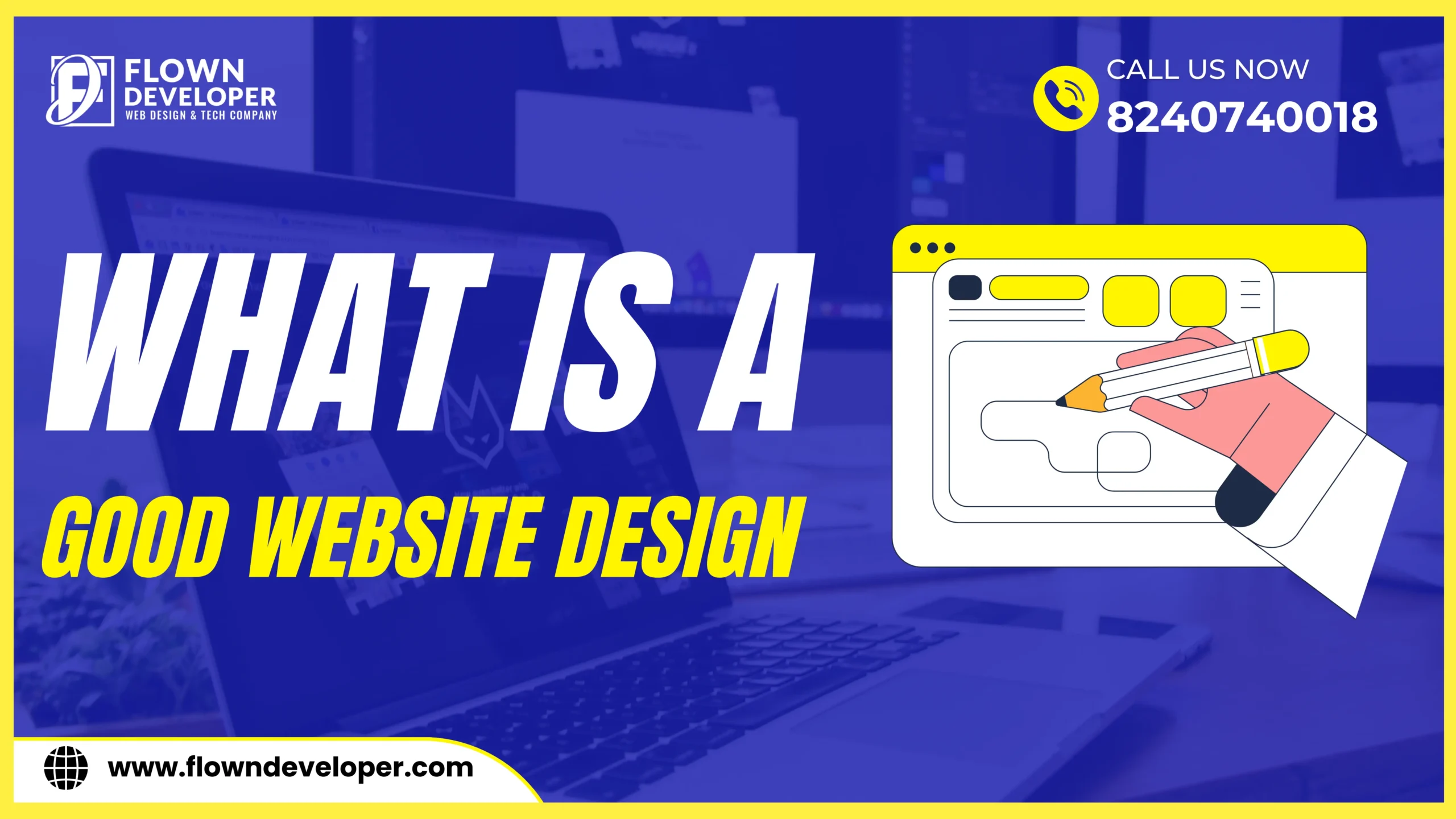
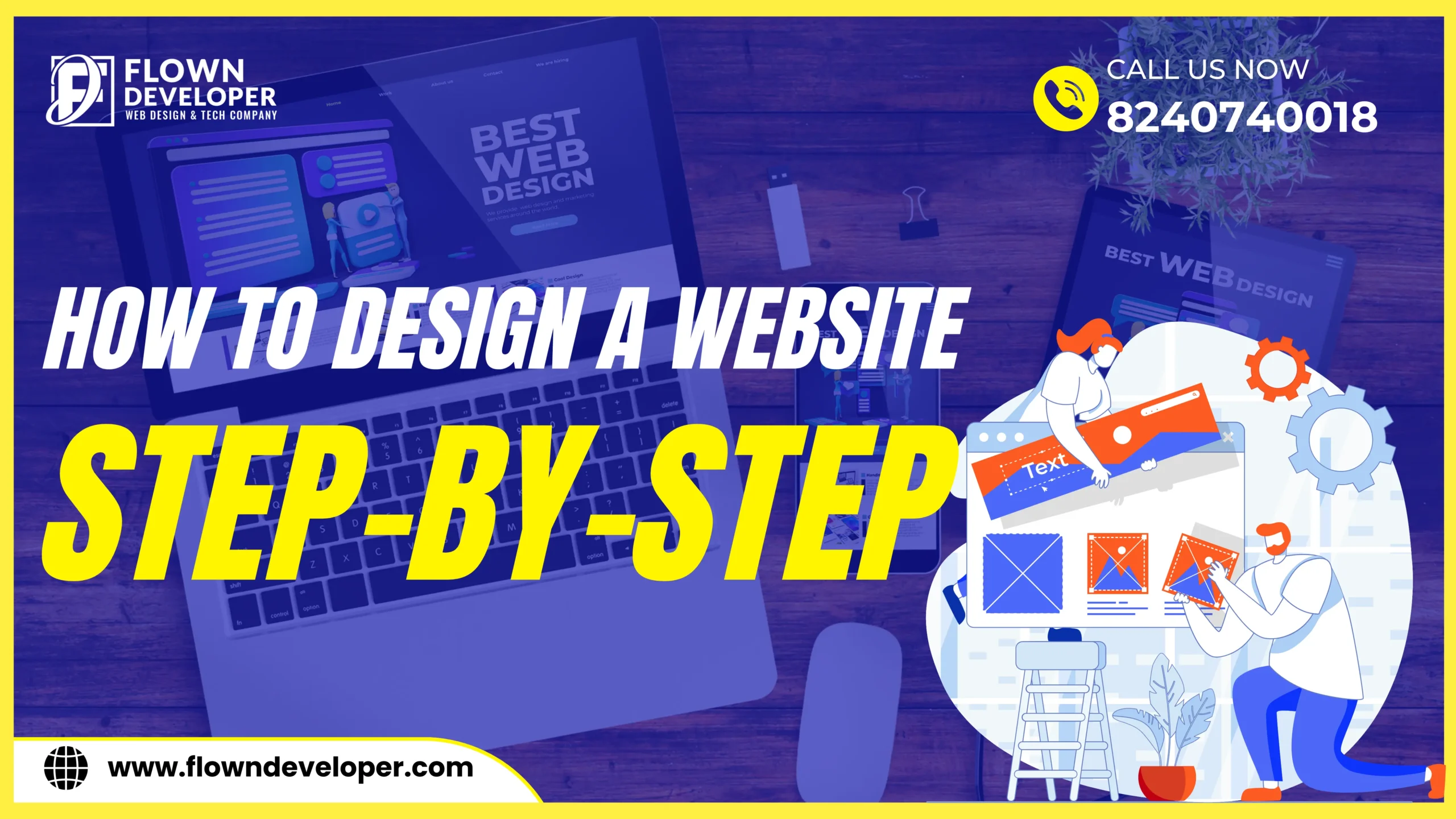
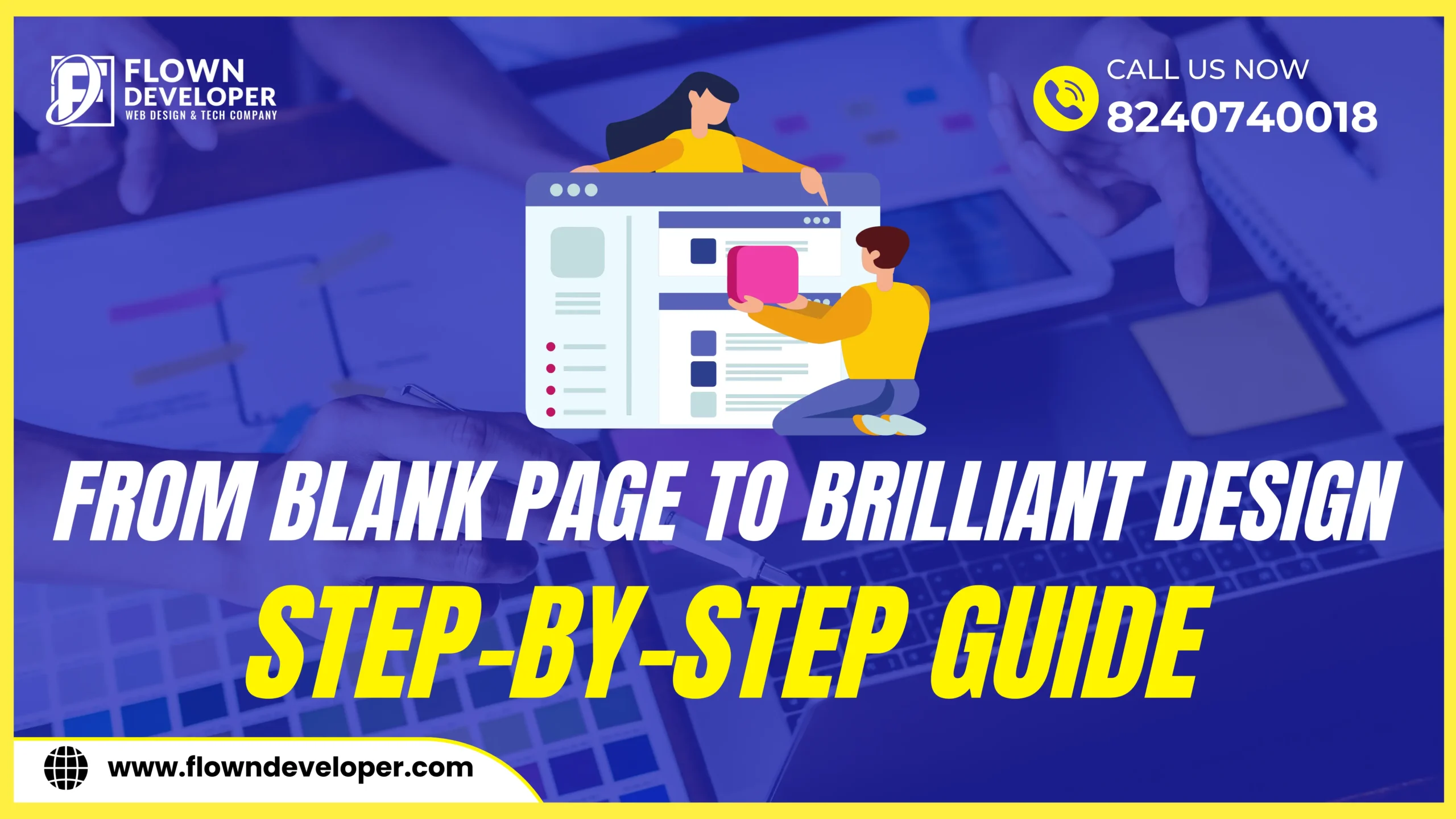
One Response